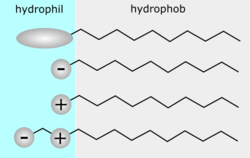
To remove water hardness, hence its softening, various substances are added to the washing bath, whose task is to eliminate calcium and magnesium ions from the solution by precipitation of water-insoluble calcium and magnesium compounds and binding calcium and magnesium ions into complex compounds soluble in water.
The most ancient method of water softening is to add sodium carbonate to the washing bath (Already2CO3), called soda ash or soda ash. The baking soda reacts with the calcium and magnesium salts dissolved in water, by forming an insoluble calcium or magnesium carbonate and a soluble sodium salt as a result of the exchange reaction. An example of such a process can be the reaction of soda with sulfate (VI) calcium, causing the water hardness:
Already2CO3 + Case4 → That's it2SO4 + ↑CaCO3
Niekorzystnym efektem zmiękczania wody za pomocą sody jest zjawisko fiber mineralization. It consists in the accumulation of sharp calcium carbonate crystals on the surface of washed cellulose fiber fabrics (CaCO3), precipitating as a result of adding baking soda to the washing bath. These crystals cause roughness and abrasion and damage to the fibers when bent. Calcium carbonate crystals can also be formed when water containing calcium and magnesium bicarbonate is heated.
In addition to softening water, soda can also fulfill other tasks. The addition of sodium carbonate to the water causes, że odczyn roztworu zmienia się na alkaline (basic):
Already2CO3 + H2O → 2 Already+ + 2 OH– + ↑CO2
The cause of the alkaline (alkaline) the reaction of the solution is OH ions– evidence of electrolytic dissociation of sodium hydroxide (rules). One of the more important effects of adding baking soda in the washing process is neutralization of the reaction of dirt. Tłuszcze zawarte w brudzie z czasem jełczeją, what causes, that their reaction becomes acidic. The alkaline pH of the soda solution neutralizes it, causing dirt to be removed more easily. Alkaliczny odczyn roztworu sody sprzyja także using the properties of soaps, which show the best detergency at an alkaline pH value = 10 ÷ 11. The alkaline washing bath environment is favorable for materials formed from cellulosic plant fibers, np. Cotton, len, natomiast jest niewskazane w przypadku animal protein fibers, np. wool.
The listed properties of sodium carbonate (soda) cause, that it is added to washing powders, formerly to soften the water, currently mainly as a pH adjuster (basicity) washing bath.
Sodium silicate is also a popular compound used to soften water (Already2SiO3).
Soda and sodium silicate, zwane washing alkalis, wchodzą więc w reakcje ze składnikami nadającymi wodzie twardość, causing the water to soften. However, the products of these reactions are, inter alia,. substances that form deposits, which cause roughness, fragility, graying and yellowing of the washed fibers, which leads to their destruction.
Currently, to soften the water, is added to the bath of washing substance, called complexons. They soften the water, creating complex compounds, soluble in a washing bath, enclosing calcium or magnesium atoms in their structure. Complexons not only contribute directly to the softening of water, but by binding calcium and magnesium, they prevent the formation of deposits, formed by the reaction of surfactants and washing alkalis they ingredients that give water hardness. Consequently, they prevent these deposits from settling on the laundry, preventing graying, yellowing and mineralization of fibers.
An example of complexons (sequestrants) są polifosforany. Substancje te spełniają dodatkowo również inne ważne funkcje w środkach do prania.